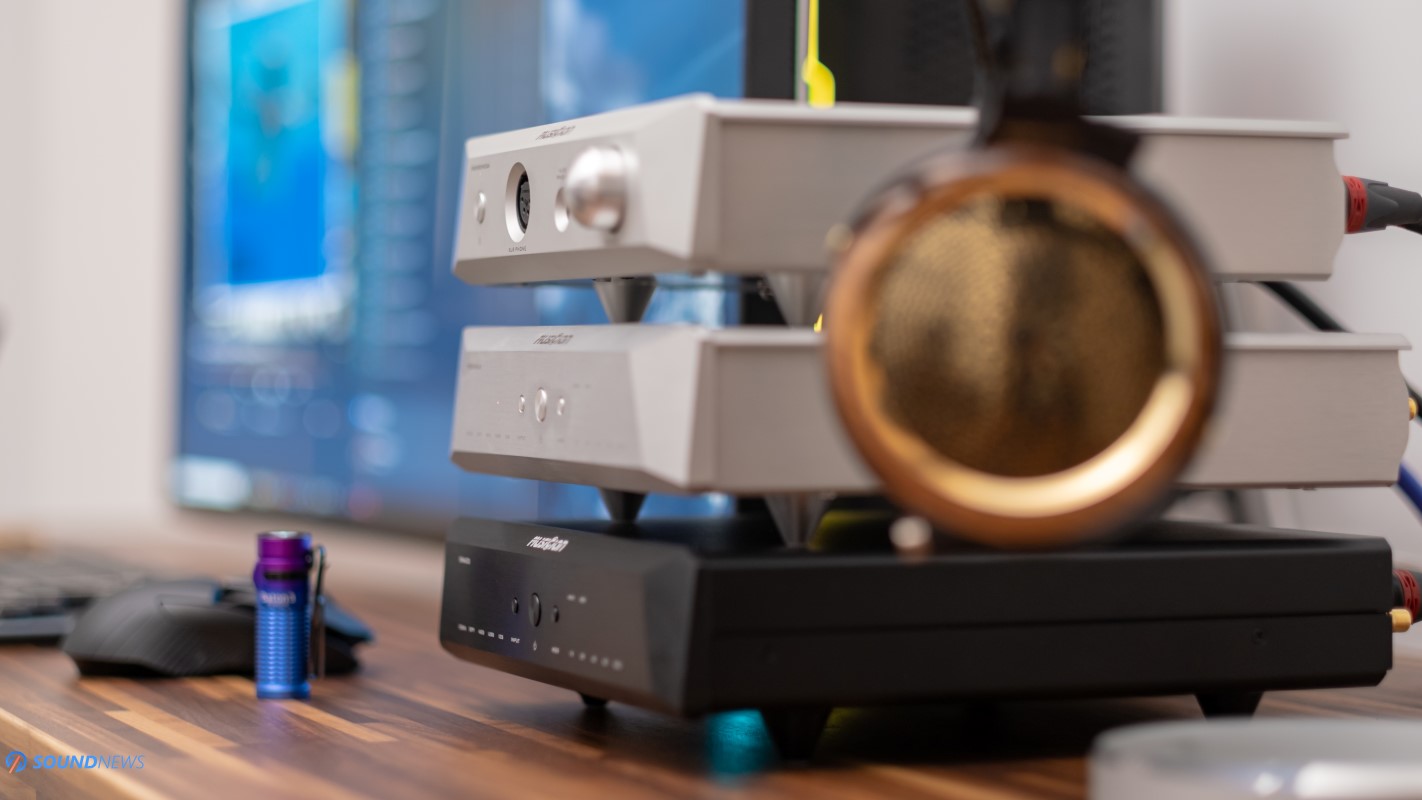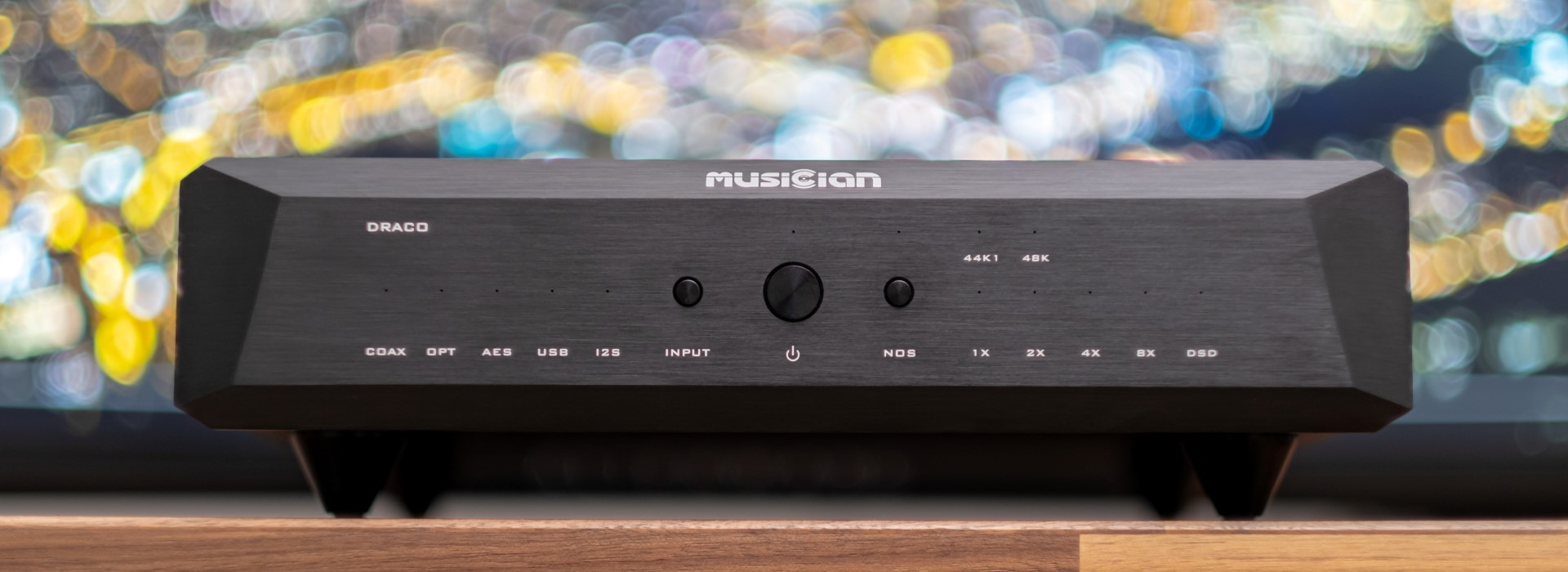
My Video Review:
If you’re looking for a DAC that would sweeten things up and add more soul into your setup, there’s nothing better than a proper R-2R ladder DAC built to the highest standards. There are plenty such makers around the globe and that’s perfectly fine as we, consumers enjoy some popcorn time, while such companies are fighting for supremacy. Some are using New Old Stock chip-based converters, while others are doing it in the most overkill way, using hundreds of hand-matched resistors, custom digital boards and FPGA coding, squeezing the last drop of performance from their creations. There is however a problem with the later ones and that is a very high R&D time and a costly manufacturing process.
But there is a new breed, that wants to deliver a similar performance, without killing your wallet for good and those are new brands that aren’t asking astronomical prices for a good signal-to-noise ratio. The freshest HiFi brands always struggled finding their identity, a cult following and confidence from customers, some will be trying harder, proving that a good sound can still be obtained from less known names at lower price points. Musician Audio always felt like that, but they aren’t shy or inexperienced anymore, it’s not the same company that I’ve met a year and a half ago.
While they are indeed hobby-driven, there is still a very long way to success. After publishing a review for their Pegasus DAC, I remember exchanging a few emails and suggesting a more affordable unit that wouldn’t compromise sonic performance in any way. A sub kilo-buck converter would gather a lot of followers and a year later, a fire breathing Draco DAC was released – that uses similar tech and components, while lowering its build quality and disregarding CNC machining for good. They added not one, but two additional converters in their portfolio, challenging the notion of entry-level for one last time, firing alarming shots into the high-end R2R crowd. At this very moment, Musician Draco is the most affordable fully balanced R-2R ladder DAC there is, equipped with every possible digital input, capable of decoding the highest bit-rates out there, while costing only $749. Today I’ll be conducting an in-depth review for their most affordable music making machine and before I move on to sound impressions, let’s unbox it and see what’s inside.
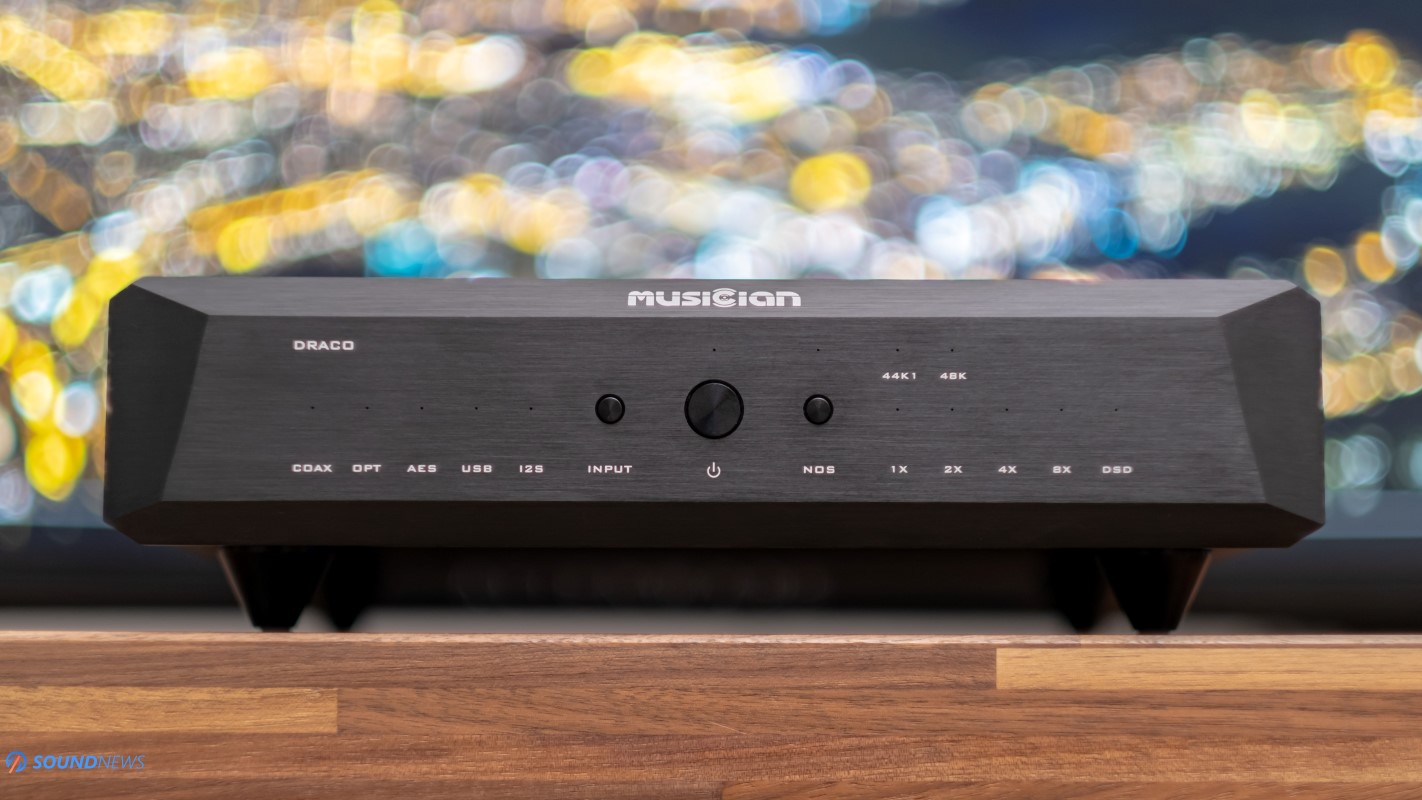
Unboxing & Package Contents
As its bigger brothers Pegasus and Aquarius that came before it, I was not surprised seeing an identical packaging, arriving double boxed for a better protection during shipping and there’s a lot of foam in there that will work as the last line of defense. There are 8 pieces of plastic that will be holding everything together like a sandwich and I’m pretty sure that Draco can’t be damaged during shipping with such care put into its safety. Draco is a substantial looking unit, resembling their Pegasus, but losing some weight due to a less impressive chassis. Inside the box you’ll find a warranty card, a simplified user manual and that’s it. Draco, like most R-2R DACs is a purehearted digital-to-analog converter that doesn’t carry additional features like preamp functionality. Forget about a remote control with such a device, as you’ll need to control its volume with integrated amps / head amps or with dedicated preamps.
This shouldn’t come as a con, as most R-2R DACs are coming without preamp functionalities, cutting massively on manufacturing costs. There are some units that will be providing such features, but we’re talking about 5-figure prices already.
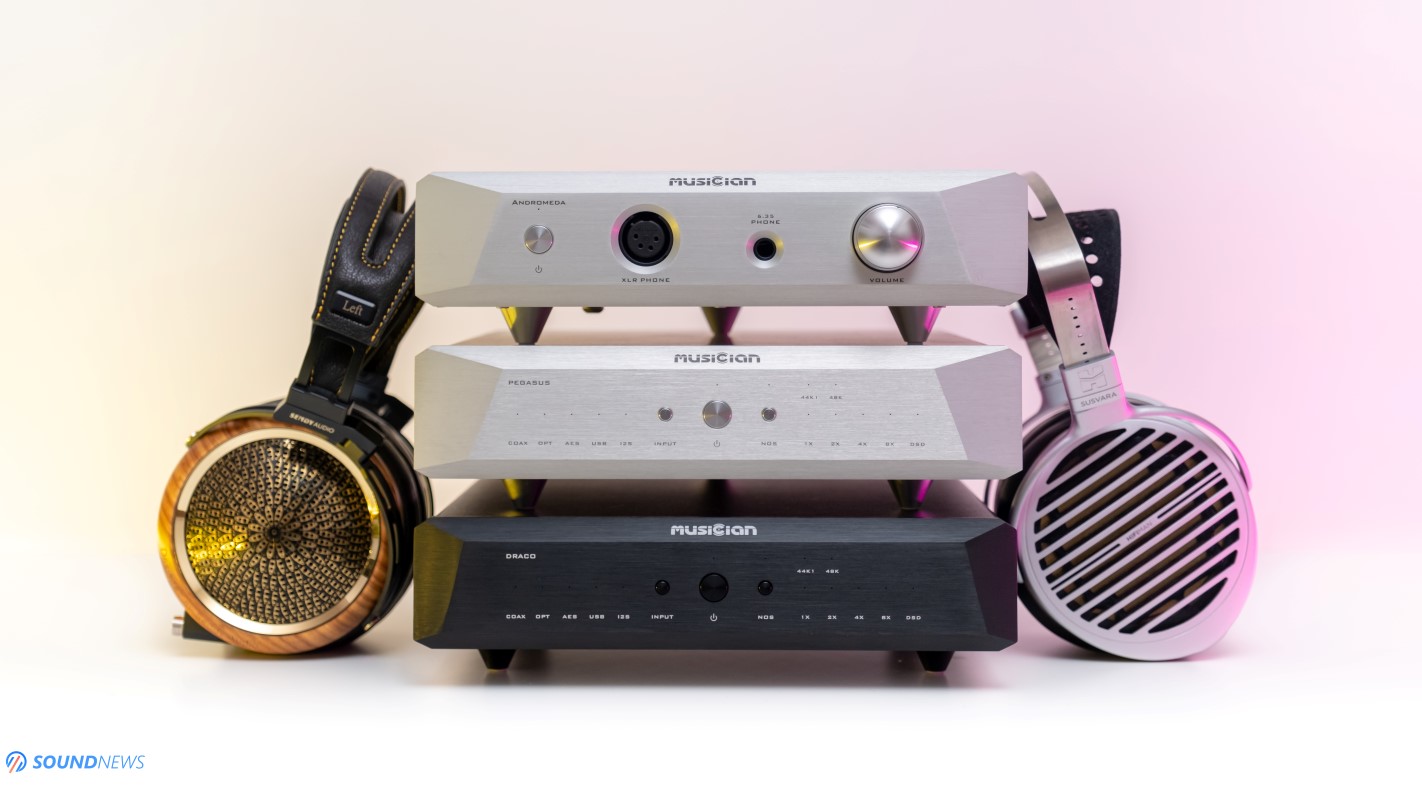
Design & Build Quality
First and foremost, I’m glad that Musician Audio are sticking with a design language that I can easily recognize from afar. All their creations are having similar design cues, face plates and the fiery Draco is no different. It uses an identical CNC machined face-plate to that of Pegasus and the only difference is that Draco comes only in a black color scheme. Since Musician team wanted to deliver a similar experience at a lower price point, they decided using an iron case powder coated with several layers of matte black paint. It looks exactly as premium as that of Pegasus, but when holding it, I felt it thinner and not as tank proof as it was before. But hey! $350 Off for a less impressive case? Sounds about right to me. I strongly recommend never putting it near a powerful Wi-Fi router or repeater, as its case can’t repel all wireless interference as it was the case with its bigger brothers. Musician replaced a 3-feet configuration with a more standard 4-feet setup, they have soft silicon pads under them to absorb micro-vibrations, which are always nice to see.
Apart from that, we are looking at the same good old Pegasus that is stealthier looking than before. I’ve used it in the living room as a centerpiece for a stereo setup and I was never asked what’s that and how it operates. Musician Audio lowered its power consumption by a lot, it needs 4 times less power compared to Pegasus, meaning that less heat would be building up by its output stage. You can easily stack it on top or below your amplifier without wondering about heat dissipation. As its bigger brothers, you won’t find rough edges, it’s smooth to the touch, it has flushed buttons and you can easily handle it around without scratching your expensive equipment.
I don’t find it overwhelmingly large or heavy as it was the case with Rockna Wavelight and Audio-GD R7, but it’s definitely bigger and heavier to usual Chi-Fi delta/sigma converters. At around 3.5 kg or 8.8 lbs and at 280 x 250 x 50 mm, it’s on the larger side, but it can still form an elegant looking stereo or headphone setup. Its dimmed LEDs draw little to no attention to the cat eyes of our beloved, blending nicely in the living room and leading to an impressively high WAF. All in all, some corners were cut achieving a desirable price point, but this is still a solid piece of metal that is well-built, easily withstanding the test of time.
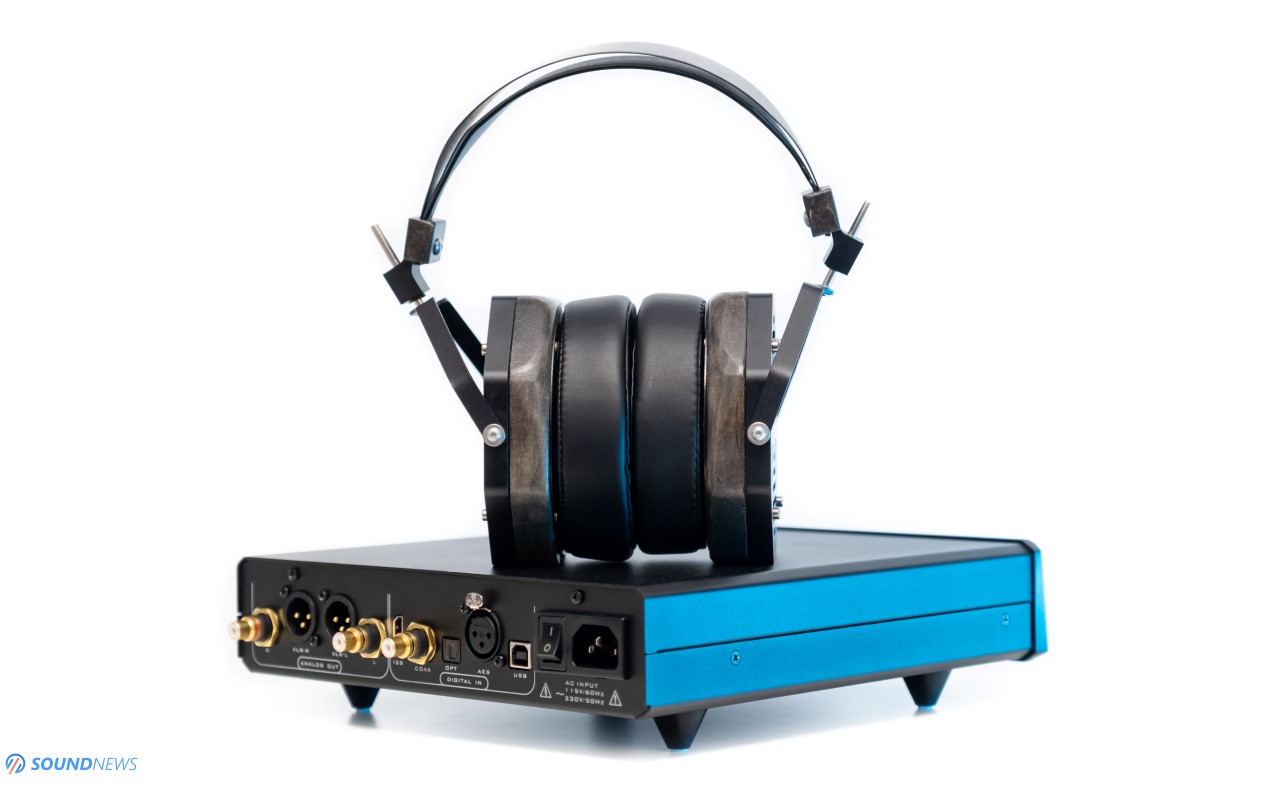
Controls & Connectivity
Draco as its siblings before it looks like a simple and straightforward DAC. There are only 3 buttons on its front panel, the one in the middle is your usual On/Off button, on its left your input selector and to its right there’s a NOS/OS button, its either On (Non-Over-Sampling mode is engaged) or Off (Oversampling mode is engaged).
On its back the most important digital inputs are present as USB, AES, Coaxial, Optical and a single I2S input. Draco looks like a fully-fledged balanced DAC and as such it offers a pair of XLR and RCA analog outputs which are offering fixed voltage outputs. Its signal amplitude sits at 2.8V via XLR and 1.4V via RCA when playing PCM files and at 2V on XLR and 1V on RCA when playing back DSD content. If you need a little bit more, you can always add an active preamplifier like their Musician Monoceros or any other unit.
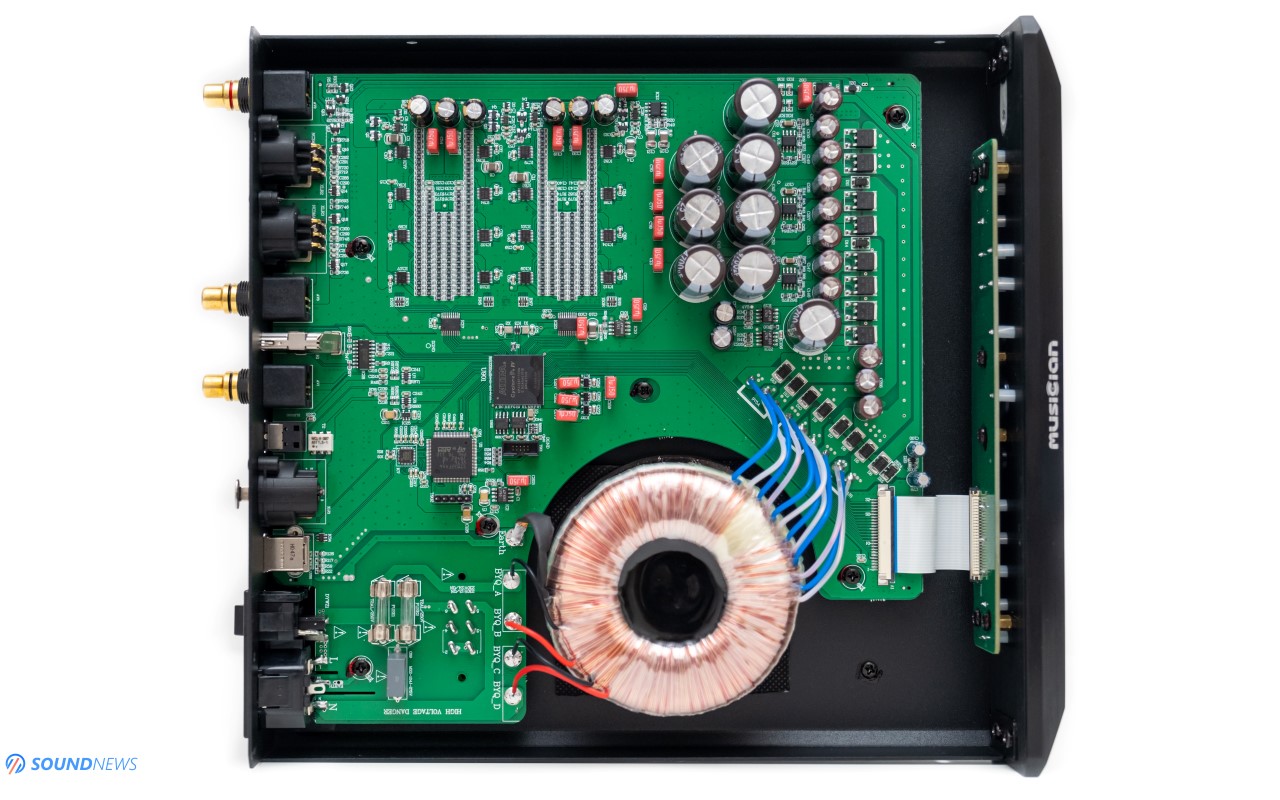
Under the hood of DRACO
R-2R ladder DACs are not your typical chip-based DACs where people are throwing a few chips, a digital board, some crystal clocks, an I/V and LPF (output) stage, all powered by some Meanwell switching mode power supplies and voila! Here’s you DAC. R-2R creations are something else entirely and, in many cases, everything except for transformers, clocks and capacitors could be developed in-house, which is the case with Musician audio creations.
In an R-2R ladder DAC, the signal is being processed by networks of resistors also called as ladders, it’s important having the highest precision ones installed that will do all the heavy work. This time around Musician isn’t specifying the precision of its matched resistors, but I’m pretty sure those are 0.01% precision ones. The ladder itself looks similar to that of Pegasus…but it’s not exactly the same. There are less resistors per ladder and only 8 control chips versus 12 on Pegasus, but the absolute biggest change lies in the power supply implementation, its operation mode and everything that is surrounding it. As it was the case with Pegasus, these seem to be stereo modules, meaning that Draco is a fully balanced DAC from input to output and it’s nice having it at such an affordable price. The R-2R ladder network is being controlled by an ARM CPU and by an Altera Cyclone IV FPGA infused with their own custom code that was perfected for more than two years.
There isn’t an EMI/RFI filter anymore and it seems that the whole power regulation and filtering stages are slightly less impressive on the Draco. We all know that after the ladder and its clocking system, the power supply seems like the second most important part on a DAC and I’m already imagining a slight drop of resolution.

Musician used their own custom-made digital board that will take care of all its digital inputs, it uses the whole bandwidth of the USB 2.0 protocol. Musician team wanted to make it as reliable and as future-proof as possible, developing a module that supports the highest sample rates as PCM 32-bit 1536 kHz and DSD1024! It is really impressive.
On the analog side, Draco uses a few low-loss tantalum-polymer capacitors that are typically found in expensive designs. I’m seeing audio-grade electrolytic caps, a few ELNA Silmic II, accompanied by WIMA reds which are adding a high-end flare to this unit. There are several voltage regulators from Analog Devices (those aren’t op-amps) and of course a simplified power supply circuit. That O-type transformer is filtered just a single time (versus two times on Pegasus and Aquarius), its AC income isn’t conditioned anymore, only its DC output which is considerably more important.
Draco is not using a single op-amp in its LPF (output) stage, you can spot only discrete components, the same ones that are powering their Pegasus, which are always nice to see. For the price, I am actually quite surprised how close Draco looks to their Pegasus, its internal layout is quite similar and most of its components as well. Its capacitance is more or less the same to that of Pegasus, and I’m already expecting a similar thump into my chest when dynamics would go wild.
It’s important mentioning that I’ve warmed-up the Draco for about two weeks in a headphone setup, before having a serious listen to it. I can’t say if the sound changed in any way, but I hope some of the grain that I’ve heard in the first day is no longer present.

Test Equipment
When it comes to technicalities (as detail-retrieval, transparency and transient response) it seems that my headphone setup is currently more impressive to my stereo and that is precisely why Draco was used mostly in my office setup in front of a PC. Fear not, I’ve used it for a few days in my stereo, it was connected to a preamp and to a pair of power amplifiers used in bridged mode, mostly because it’s much easier experiencing its sound staging capabilities, depth and imaging.
- In my headphone setup, a Singxer SU-6 DDC was providing the bit-stream for the Draco, followed by their Andromeda and sometimes by a Benchmark HPA4, driving several planar-magnetic headphones as Hifiman HE1000SE, Audeze LCD-4, Erzetich Phobos V2021 and Sendy Peacock.
- In a stereo setup, Draco was connected to a Benchmark HPA4 working as a preamplifier, followed by two Benchmark AHB2 power amplifiers or by a single KECES S300, driving a pair of KEF REFERENCE 3 loudspeakers. From input to output, everything was used in balanced mode, as Draco offers a (much) better performance via XLR and a lower channel cross-talk.
Okay folks, my ears are begging for some music, so let’s hit some ear-drums!
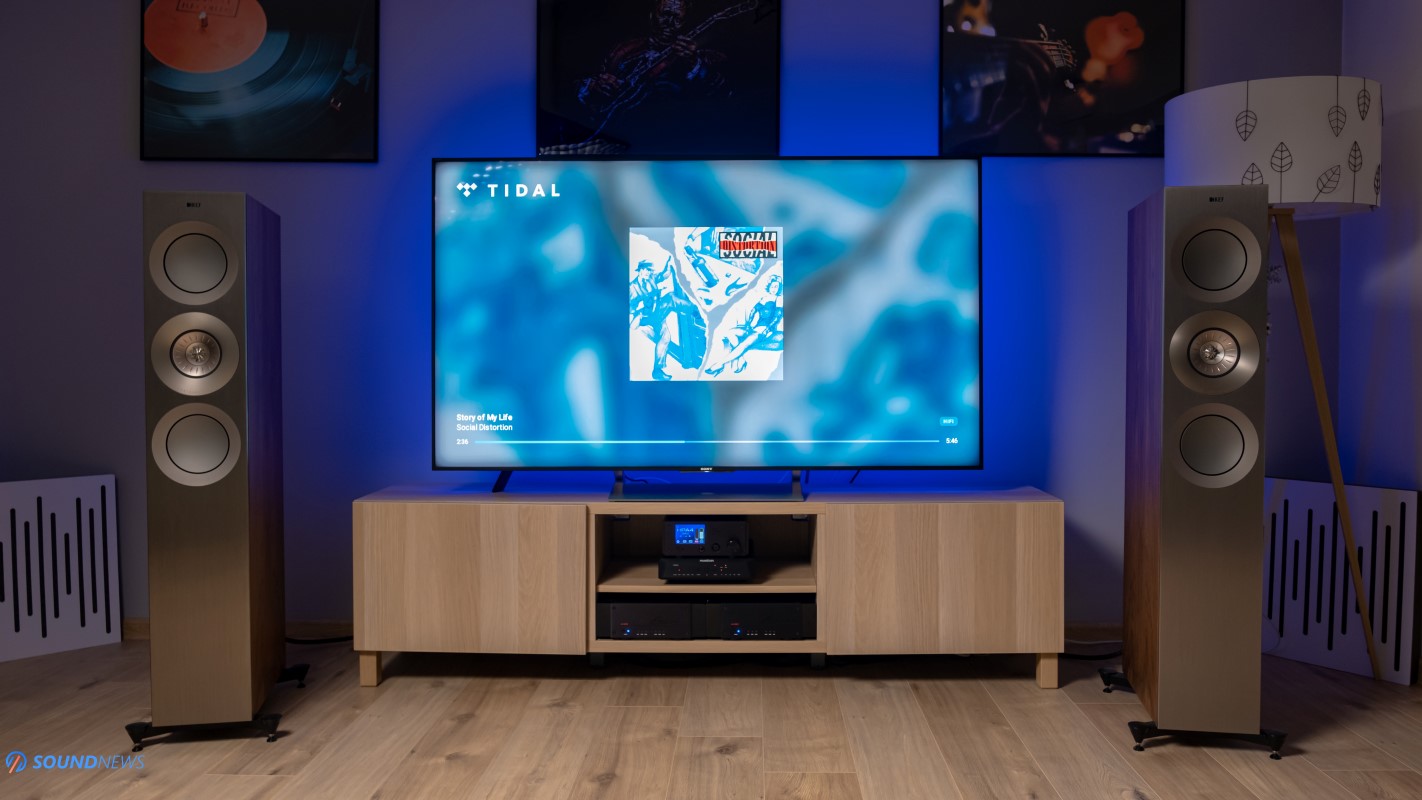
Sound Performance
I. Preliminary Impressions
After listening to it for a few days and then switching back and forth between it and Pegasus, it felt like visiting an old friend that I grew up with long time ago. It was clear that I am getting a similar sound signature that defines R-2R DACs from a sea of chip-based delta-sigma converters, that you can find at every corner of Hi-Fi. Draco reminds me about a period when I was a kid and on Friday evenings my father would drop the needle on his turntable and we would listen to his classics and talk about them. There is something going on behind it, that is difficult describing by mere words. As good as modern converters are in terms of technicalities and transparency, there is something they can’t do so well, that looks like an easy-peasy job for R-2R ladder DACs. Draco is not about squeezing the last drop of performance out of your tunes like modern DACs are doing, it doesn’t want to highlight the leading edge and contours of the musical notes, but it always reminds that I’m doing this for the love of music. With it, music just sounded right from the get go, it flowed naturally, it felt weightier and way more organic and life-like, it’s like tasting real food after eating fast-food for a few days. It’s not the best analogy, but that is really how Draco sounded after listening to chip-based converters for a few days. My tracks felt rejuvenated, more vivid and alive sounding and I’m not about the frequency response, but the way everything was being delivered to me. That micro-stuttering that sometimes appears on delta-sigma converters was completely gone! Replaced by rivers of smoothness, like I was no longer listening to PCM material, but to top-class DSD recordings. If digital vinyl would be invented in a near future, this is precisely how it would sound, discarding the smallest details, while focusing on the core values and on the act of listening itself.
When I’ve put it on a nice DDC like Singxer SU-6, completely bypassing its USB input and clocking system, I was quite surprised by how impressive it arranged all the notes around me, delivering a spot-on imaging while decompressing sounds much further, adding more air in between them and letting them fly to the abyss. There are only several chip-based converters that will deliver an almost holographic experience, but with Draco that effect was multiplied, it always delivered a 3D experience, a wide and open sound regardless of the music that was being played.
To some degree, all R-2R converters are carrying such traits, planting their seeds in Hi-Fi systems around the globe and the little Draco is really no different. Obviously, there are plenty of differences between them, even bigger ones if we are talking about R-2R converters due to their custom nature. The family resemblance is too big to ignore, as Draco really sounds like a miniature version of the Aquarius DAC and like a side-step from their Pegasus DAC that impressed me with its naturalness and fast transient response, performing unlike R-2R converters that I’ve heard up to that point. It isn’t exactly a side-grade, but a really small downgrade from the Pegasus, as resolution dropped by a little, but the biggest downgrade was signal intensity and this is precisely where corners were cut, achieving a more affordable price point.
Musician team lowered its voltage output to 2.8V on its balanced output compared to 3.55V on Pegasus and 3.6V on Aquarius, meaning that you’ll need to crank the volume slightly higher on your amplifier arriving at the same sound pressure level. With chip-based converters you’ll need just two op-amps to arrive at the industry standard 4V via XLR, but with FPGA and R-2R creatures it is considerably more complicated rising up the voltage without rising distortion numbers. This is the case with the Draco, but I’m glad they left it as it is, without rising harmonic distortion to alarming levels.

II. Using Draco in a loudspeaker setup
Draco is a pure R-2R DAC, it doesn’t offer preamplifier functionality and there is no way to control its volume, it will always output a steady 2.8V via XLR and 1.4V via RCA if PCM material is being played. In a stereo setup, you’ll need an integrated amplifier to control its volume, or a preamplifier followed by a power amplifier as I am doing. I am currently switching between a warm and full-bodied sound that I am getting from a KECES S300 and when I want to hear the unspoiled truth, I will be connecting two Benchmark AHB2 power amplifiers linked together in bridged mode.
All the latest affordable oversampling DACs that are using delta-sigma modulators are offering a volume control of some sort, bypassing the need of a dedicated preamplifier. The biggest problem is that such units are controlling their volume with a (cheap) attenuation technique, like a simple analog knob that is degrading the sound quality, or by the help of digital attenuators that will be wiping bits of resolution, again degrading the final outcome. Musician team didn’t want any of that and for that reason alone, they are selling separately a dedicated preamplifier that is called Monoceros – we reviewed it right here. An active preamplifier like that doesn’t work only as a simple volume control, as it doesn’t lower the resolution of your DAC, but it also works as a signal booster increasing the voltage of your DAC and lowering its output impedance, so that amplifiers that will follow will have a much easier job in delivering amazing dynamics, without hurting the pace, rhythm and timing. When I’ve added a Benchmark HPA4 with the AHB2 monoblocks, everything I’ve mentioned about the Draco moved into my living room. Imaging was outstanding and I could easily focus or any particular sound, creating a precise map of every track, mapping the location of musicians in the room and arranging everything beautifully in the recording. Draco images like crazy if a dedicated preamplifier pays it a visit, sounding a little more 3D and enveloping compared to mid-level oversampling DACs. It wasn’t completely unshackling my music, that title would still go to their Aquarius DAC, but it was going into the same direction, always trying to play tricks with my mind, arranging all that nicely in front of me. Unsurprisingly, I was hearing a good transient response, everything felt snappy and tightly controlled and this is exactly how my stereo sounds with a dedicated preamplifier in between a source and power amps.
Dynamics were impressive, going almost as fast and impactful as Pegasus, but never reaching the same levels of entertainment. Musician team armed it with a less impressive power supply and output stage, it consumes about ~4 times less power from the wall and all those things combined lowered its dynamics when big plays, live orchestras and soprano voices were invited in my room. It was by a hair more ethereal, calm and gentle sounding to me. If Aquarius and Pegasus felt fearless and visceral in their delivery, Draco was a little shier and less vocal about it. It wasn’t pounding that hard and KEF’s Reference 3 were shushing me that dynamics are the biggest downgrade coming from its bigger brothers. All in all, Draco performed admirably in a loudspeaker setup, everything felt tightly controlled, yet smooth and organic sounding, portraying even bigger pictures to the chip-based converters, while gently pressing the brakes with dynamic swings.
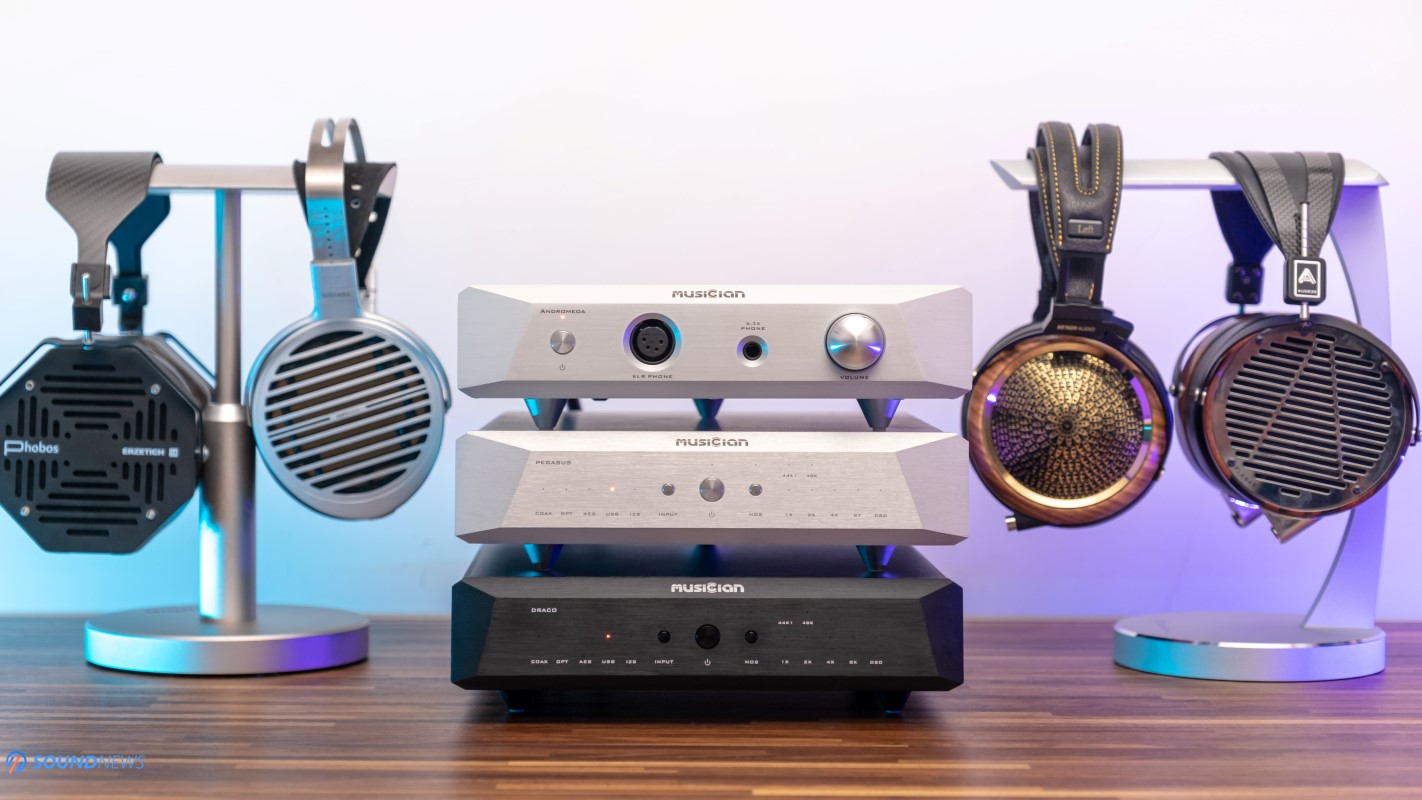
III. Detail Retrieval & Transparency
Asking about detail retrieval in R-2R DACs is like asking a Ferrari owner how much gasoline his car consumes; such things aren’t important in both cases. You all know by now, that the sole job of a DAC is being correct in its math, trying to convert the bit stream as close as possible to the original file that was received from the digital transport. That transport could be a simple PC, a smartphone, maybe a TV, a CD player or why not a wireless streamer. By nature, R-2R ladder DACs that use hundreds of resistors can’t be exactly as precise and clean sounding, as chip-based oversampling DACs. In case of Draco, it seems that Musician used lower quality resistors to the ones found in their Aquarius and Pegasus, as there is a little less of everything being put on a plate. Less micro-details and nuances came forward, but please don’t panic as there are still plenty of details left untouched. Putting a higher performance DDC before it and some of the cleanest preamplifiers and power amplifiers after it, did really squeeze the absolute best it was capable of and it didn’t disappoint at all.
I was still hearing the tiniest nuances coming up to the surface in an easy way, but it was never highlighting their contours and leading edges. Draco focuses mostly on their innards, on their weight and substance and a whole less on their outer shell that wasn’t as defined and sharp sounding to me. With Draco, musical notes would just pop here and there, creating a precise map of every track that I was listening to. This isn’t the most revealing sounding converter out there, but it was always begging adding more music to my playlist, trying to impress me with its smoothness and relaxed presentation. Musician isn’t specifying anywhere, but I’m sure 0.05% resistors were replaced with 0.1% precision ones and the whole ladder missed some resistors compared to their Pegasus, meaning that its math isn’t as precise or extremely close to original intent of mastering engineer.
There is however a simple trick that would improve the leading edges, making it a little more articulated and tighter sounding, just engage its OS (oversampling) mode and be surprised by a small boost of resolution. By default, it comes with NOS (Non-oversampling) mode engaged and if being completely honest with you, I’ve enjoyed it the most with acoustic music in its default mode. It adds a layer of refinement and a feeling of right in NOS mode, but it could sound a little clearer, a tiny bit more focused and precise with OS mode engaged. In OS mode, it sounds a little closer to chip-based converters, it goes by a little faster and decays musical notes in the same manner, improving the focus and making it clearer and more detailed.
You can do it my way. If it’s evening outside and you’re tired, engage its NOS mode and be carried away by music. If it’s Saturday morning and coffee didn’t have an effect on you, engage its OS mode and prepare for a more visceral and faster paced experience. It isn’t a huge difference, but it’s a very welcome one, like having two DACs in a single chassis.
In either mode, those small nuances will never sound hollow and empty, as Draco always infuses into own medicine, adding some life where there is none, adding weight and sparkle down low, constantly trying to improve your listening experience.
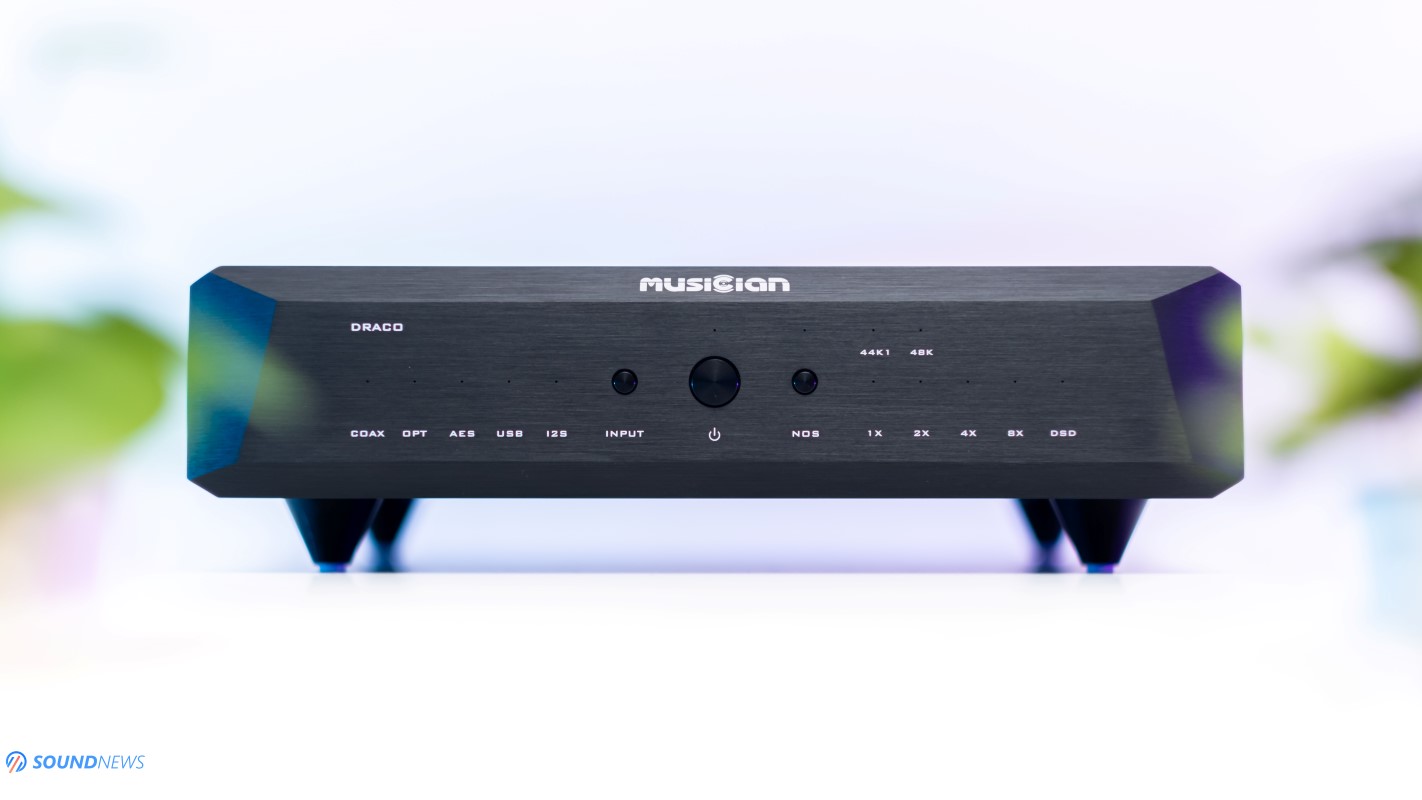
IV. Transient Response
The absolute biggest change in dynamics with your speakers or headphones are providing your amplifiers, as those are the ones that will be controlling their diaphragms. However, that doesn’t mean the digital source doesn’t play a role in delivering a faster or a slower transient response. Just compare an affordable turntable with an affordable DAC, use the same amplifiers and speakers and you’ll get what I meant. I’m one of those guys that likes to have several sources around, because dynamics are rendered differently with all of them. When I want some creaminess and saturation, I will be surely powering on the Gold Note DS-10 Plus, when I want the most liquid and easy going sound, I will be surely powering on the Audiobyte’s HydraVox. When I want tons of details and nuances, without beatifying my music, a Matrix Audio Element X or a Topping D90SE would be doing that instantly. Sometimes, I want all of those combined, without toning down technicalities and this is where Musician Aquarius fits in like a glove, sounding technical, precise, yet musical and extremely smooth and engaging. Draco is following the same school of life, trying to be relevant when it comes to cleanness and transients and very competent when trying to awake dynamics and put butterflies in my belly.
Putting it bluntly, Draco isn’t the fastest, not the hardest kicking converter that I’ve tried, but putting it against affordable chip-based converters, it isn’t blushing and shy sounding anymore, keeping up with my music and delivering the right dose of dopamine. I find it more dynamic and engaging compared to mid-level Topping, Gustard or SMSL converters, as there is still plenty of nerve and impact to be experienced with the right amplifiers and music collection.
I’ve tapped my foot, I’ve smiled and I nodded my head while listening to my usual electronica tunes, it was keeping up with an increased tempo and in many ways, it sounded like a lightweight Pegasus. Bass notes were still impactful and powerful sounding, easily reaching 20 Hz before snapping my fingers.
I’m not a huge fan of electronica beats playing back on R-2R converters, but let’s give it a try. Noisia – Outer Edges (Qobuz / Tidal) is one of those albums that will awake your brain instantly from its sleeping state, mixing three cups of coffee with a glass whisky and injecting that into your blood stream. This album is packed with killer grooves, jarring layers of textures, constantly bombarding your body with sci-fi sounds coming from another dimension in the most punishing way. There are still a couple of misfires here in here, but all in all, this is a solid album, trying to sound original and impactful even on the Draco. I never felt that Musician’s unit was slowing things down, but it was up to me searching for the rhythm and groove.
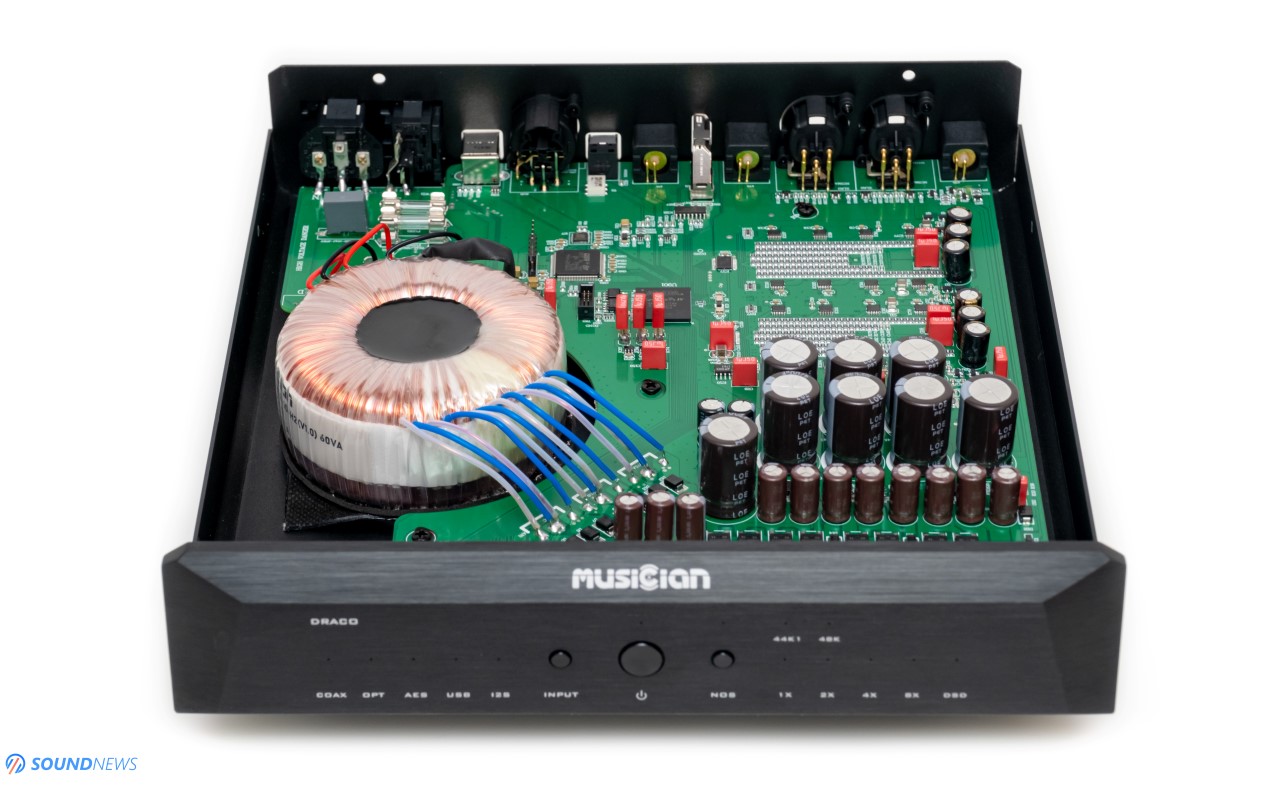
V. Soundstage & Depth
Finally, I’ve arrived at the most interesting trait of R-2R DACs. While I understanding down to the smallest details how a chip-based, FPGA or an R-2R ladder DAC is working, I never understood why R-2R converts are having those gobs of layers, sending music in waves in the most natural way. If you want some organic matter appearing out of thin air all around you, get a fricking R-2R DAC and finish your quest for good. There is something unusual happening with R-2R units and I’m not about their ability to put more meat on the bone, but the way they are putting all those images in front of me. I’ve heard plenty of bi-dimensional sounding oversampling converters, but I never heard an R-2R creature that does that, putting my music in between a bench vise and compressing it as much as possible. Draco images like crazy, especially if I’m discarding all its digital inputs in favor of its I2S input. Suddenly, there is a huge air mass moving towards me in the most natural way.
It untangled my music, placing air where there was none. Even crowded underground pieces sounded like reference recordings in my stereo setup. Most R-2R converters are impressive in here and Draco is no different. Stage size felt vast, open wide, never limiting the air in any way. In a headphone setup, soundstage level is always a little exaggerated by the press, even by yours truly, still driving their Andromeda headphone amplifier and putting the Erzetich Phobos V2021 on my head, added a lot of air in between the most left and right sounds, like I’ve disengaged a cross-feed filter and my music is again open and wide sounding. While I can complain a little about its resolution and transient response, there is nothing to complain about its sound staging capabilities. Sounding deep and putting the notes around the listener could be a complicated job for entry to mid-level oversampling converters, but it’s a walk in the park for the Draco.
Still Loving You by Scorpions (Qobuz / Tidal) was such a powerful track when it was released some 37 years ago, that in fact every time it played, it was said that a baby was being created in France. I wish this would be a joke…but it has been measured by the government and yes, it’s the sole reason of France’s baby boom in ’85, crazy…right? Simply put, this song sounds exactly as gentle, powerful and touching as it did 37 years ago and it brought a tear to my eyes knowing the things that are going through my life right now. This track was recorded on tape and the combination with Draco was simply magical, it really sounds exactly as I remember playing it on vinyl many years ago. There is a lot of air travel, a lot of definition and saturation, all placed nicely around me, so I could pick only the sounds that are interesting to me. This is an old story of love and it can’t sound better than this. I was touched and impressed by its performance, my old songs sounded exactly as I remember them and this is all I want to feel while listening to them.
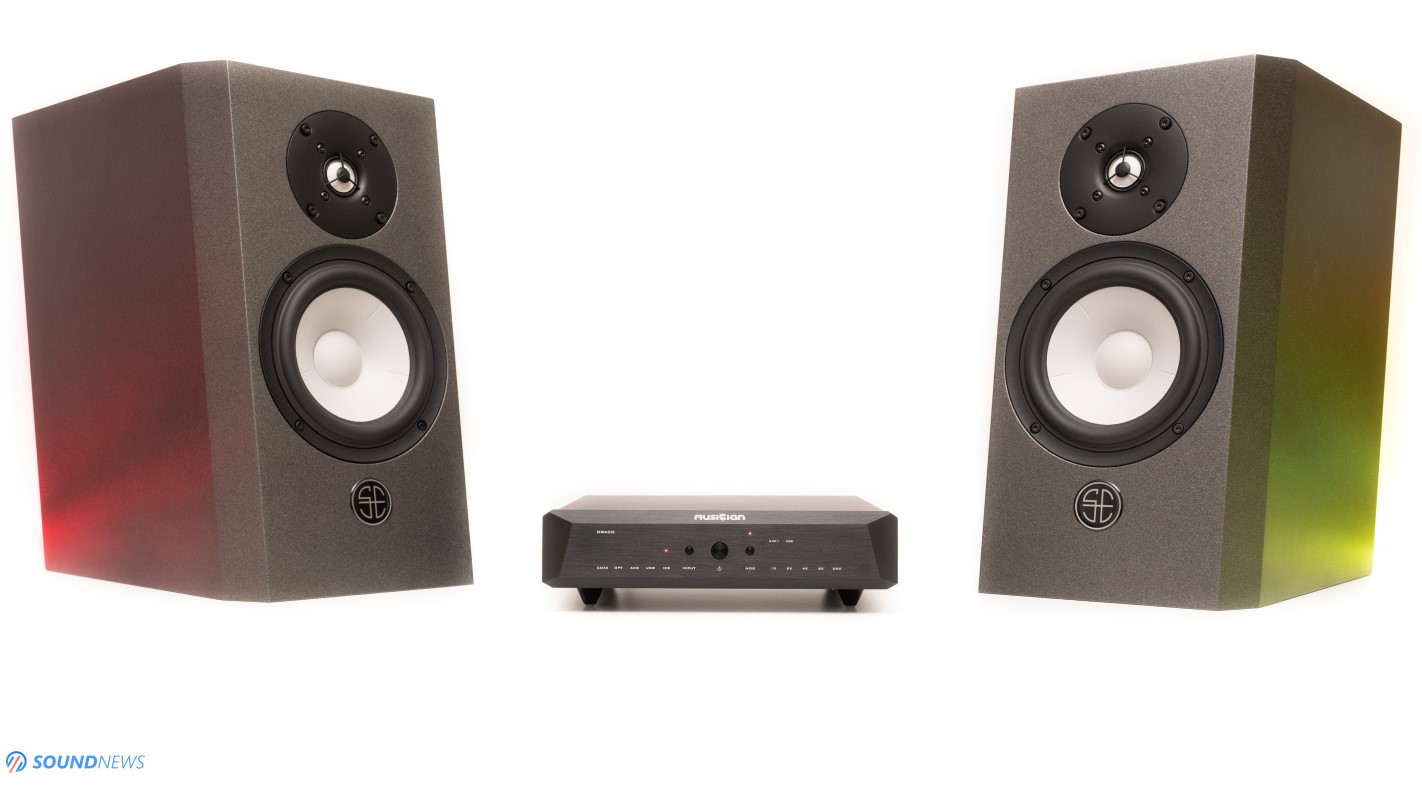
VI. Noise Floor
If you’re after the lowest possible noise floor and for the highest signal-to-noise ratio, then you’ll definitely want to use it in balanced mode. The difference is quite substantial, everything was crisper, more focused and even the noise floor went lower for a few notches. Musician specifies a noise floor of 1.3 uV on its XLR and 4 uV on its RCA output and a huge difference of 15 dB when it comes to SNR. This looks like a much bigger difference to chip-based converters, where you can rarely see an improvement of 3 to 4 dB. In both my stereo and headphone setup, there was just a tiny bit of residual noise via RCA, like my amplifiers were playing at higher volumes, something that wasn’t happening on its balanced output.
Via XLR it was both clearer and more engaging sounding, dynamics were nicely swinging up and down, delivering more of everything. If you’re still using single ended amplifiers, I would probably skip the Draco altogether, as the difference is bigger than expected and I enjoyed a lot more its XLR output.
Balanced outputs were designed to suppress any kind of noise and it really shows while switching back and forth between its outputs and as I mentioned before, get the Draco only if your system is fully balanced, so you would experience everything it has to offer, including a much lower noise floor. On XLR, background noises were nowhere to be spotted, it was pitch black and no matter if I would be using headphones or speakers, I knew that I can rely on its noiseless performance.
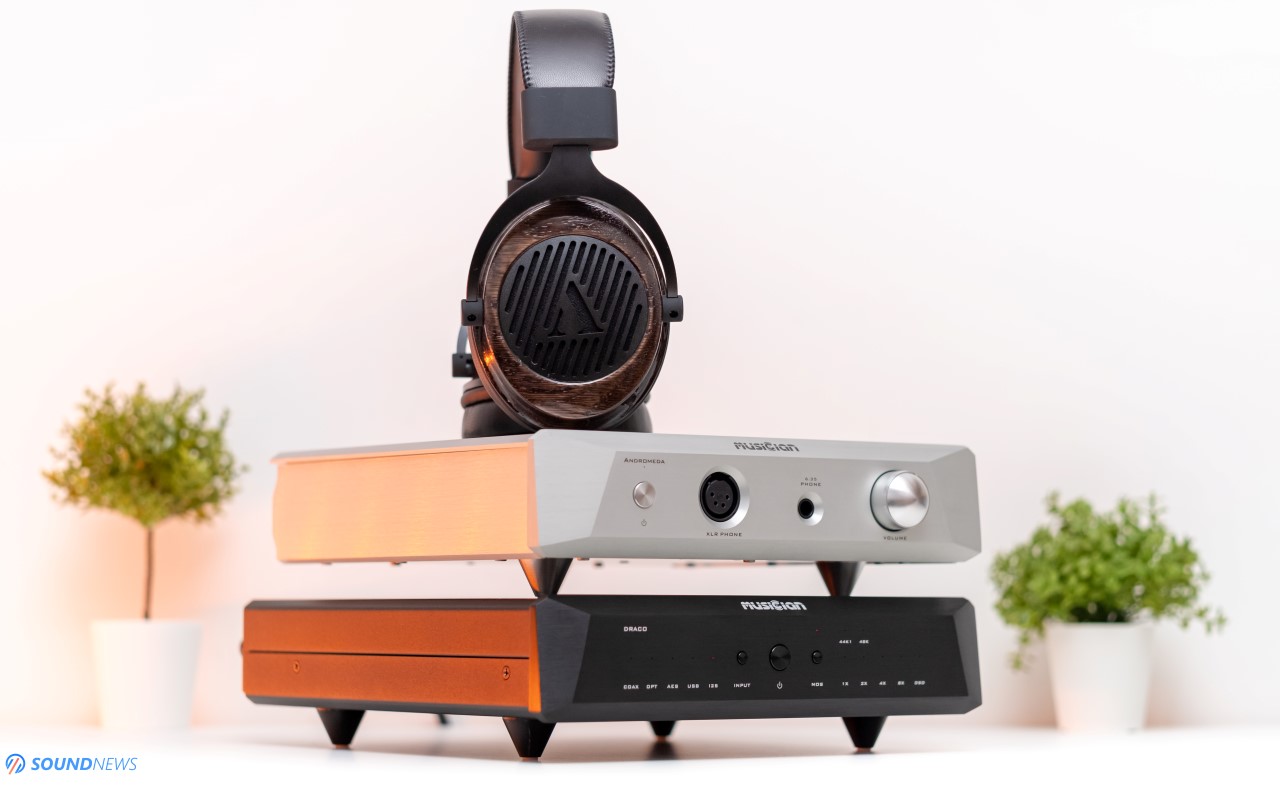
VII. Frequency Response
Draco, as its bigger brothers fully covers the frequency response, only sometimes rounding the frequency extremes by a little, never inducing listening fatigue and always making me focus on the macro scale.
A. Bass
There weren’t many resistor ladder converters that were truly outstanding in here. From the ones I’ve tried, Rockna, Audio-GD and Musician Audio’s creations were the most impressive ones in this department and Draco follows the same path. There is plenty of definition down low, there is a higher texture and a lot more substance to be felt compared to mid-fi oversampling units. There is plenty of rumble, I’m getting an energetic type of bass that feels weighty and full-bodied. There are multiple layers in the bass and those are coming to play quite often. I’m getting as much quantity as I desire, but quality wise it could still be improved upon. This isn’t the most detailed and transparent type of bass and that is perfectly fine by me, since I’m describing the most affordable converter of Musician Audio. A less impressive output stage left a small mark on its sub-bass delivery, as sometimes I wasn’t feeling it in my gut, it didn’t pound as impressive, slightly limiting dynamics in the long run. Quantity wise, this is easily an 9 out of 10, but quality wise it drops to a solid 8.
B. Midrange
This is by far the absolute best part of this DAC and that’s normal as I’m evaluating the oldest type of digital to analog conversion technique, that sounds the most believable and organic to me. Voices were always to die for, prepare some wipes and tissues when listening to opera, soprano or to your regular acoustic music that you grow up with. There is a lot of soul coming up from my music, there is more sweetness and a higher saturation. The picture that I am looking at is more vivid, like I’ve applied a higher contrast to my pictures. Everything felt more intense and obviously that always sends a powerful message to your brain. Prepare to be carried away by music, smile and cry…this is really how a proper DAC should sound in the midrange and I really wish modern D/S DACs would do the same…but aren’t doing that yet, not yet. There is indeed some bloom and richness and I dislike using this term, but Draco goes for a natural timbre and that was very obvious from the start.
C. Treble
Draco was always harmless in its treble delivery. I’ve listening to plenty or rock classics and modern pieces and all those tracks are filled with trebles, drums, cymbals, bells and all that came towards me slowly and very comfortable, never trying to steal my attention. Forget about a super extended treble delivery, about over-sharpness and strong leading edges, as Draco doesn’t care for all those things. You would still be getting your daily dose of trebles, but without making a huge splash about it. It wouldn’t impress treble heads, but it will music lovers that care more for the act of music listening. Draco felt by a hair less extended and clean sounding to the rest of their doings, but that could work as a plus, as I know plenty of individuals that want to replicate the sound of their cassette players or turntables and I believe that Musician Audio did a marvelous job in recreating such moments.
Overall, I would describe it as a little warmer and meatier sounding to the Aquarius and more or less the same to their Pegasus, while wiping clear a single layer of information. It was true to my recording, infusing just a little of its own medicine, sugar coating the whole affair. This might come as a huge con or as a huge plus, depending on your taste.

VIII. Battle of the Musicians
Musician DRACO ($749) VS Musician PEGASUS ($1099)
Musician team wanted badly a sub kilo-buck R-2R DAC that could compete with chip-based converters, without sacrificing sound quality to their Pegasus and a year later that idea came to fruition with the Draco. Both units have identical sizes, layout, LEDs, buttons, inputs and outputs. Still, there are quite a few differences, for example Draco comes only in an anodized matte-black color, while Pegasus can be also had in a raw aluminum look. While they have identical face plates, Pegasus uses a fully CNC-ed tank proof case, while Draco uses a much thinner iron case. I don’t know if you are aware, but you’re paying in between 25% to 50% for the case alone with CNC machined units, but that is no longer the case with the Draco.
Musician Audio further optimized its internal circuitry, it seems that less resistors are being used and its power supply implementation isn’t looking over the top, as it was the case on Pegasus. AC voltage isn’t filtered anymore, only DC voltage, luckily that didn’t affect the signal-to-noise ratio or the noise floor itself. Last but not least, Musician slightly lowered its voltage output, from 3.55V on Pegasus, it went lower to 2.8V on Draco, meaning that it would not sound as loud and for a proper comparison I needed to volume match both units. For that I used the MiniDSP EARS system and the Benchmark HPA4.
After using identical power and interconnect cables and the same Singxer SU-6 interface, I’ve went through a larger music collection and surprisingly…both units are sounding more or less the same to me. After conducting two blind tests, I couldn’t differentiate which is which. One was done in the evening and one after a shower in the morning and I thought I should hear a major difference when I’m full of energy in the morning, but again both units sounded more or less the same.
If I’m looking at them and I know which is which, Pegasus appeared as slightly more refined and maybe a little more detailed up top, but again only when I know which unit I’m listening to. Draco sounded by a hair less controlled in the bass, less revealing up top, rounding the whole frequency response by a little, but the difference was so small…it was negligible. If you get the Draco, Pegasus doesn’t look like an upgrade path, only their Aquarius which is something else, clearer and even bigger sounding in every possible way.
It was unusual hearing my electronica tunes exactly as fearless, as impactful and as visceral on both units, but after a few days it struck me why that is happening! Both units were being powered by a Plixir Elite BAC1500 passive power conditioner and I remember the (huge) benefits it brought to the units that have a less than perfect power supply implementation. After disconnecting both units from the Elite BAC1500 and powering them from the wall, finally there was a clear difference, as dynamics and resolution went down by a notch on Draco, Pegasus sounded more dynamic and alive and Draco a bit gentler and smoother by a little. I’ve arranged a third blind test with the help of my beloved and sure enough, some differences started appearing slowly, but in all honestly, I still don’t consider the Pegasus as an upgrade path to the Draco. The biggest difference lies in the signal intensity, as you’ll be cranking that volume higher on the Draco, subsequently rising distortion coming from the amplifier by a little and that’s by far the biggest difference.
If Pegasus felt like an overachiever at its respective price point, Draco feels like a must-try unit if you never tasted R-2R DACs before.
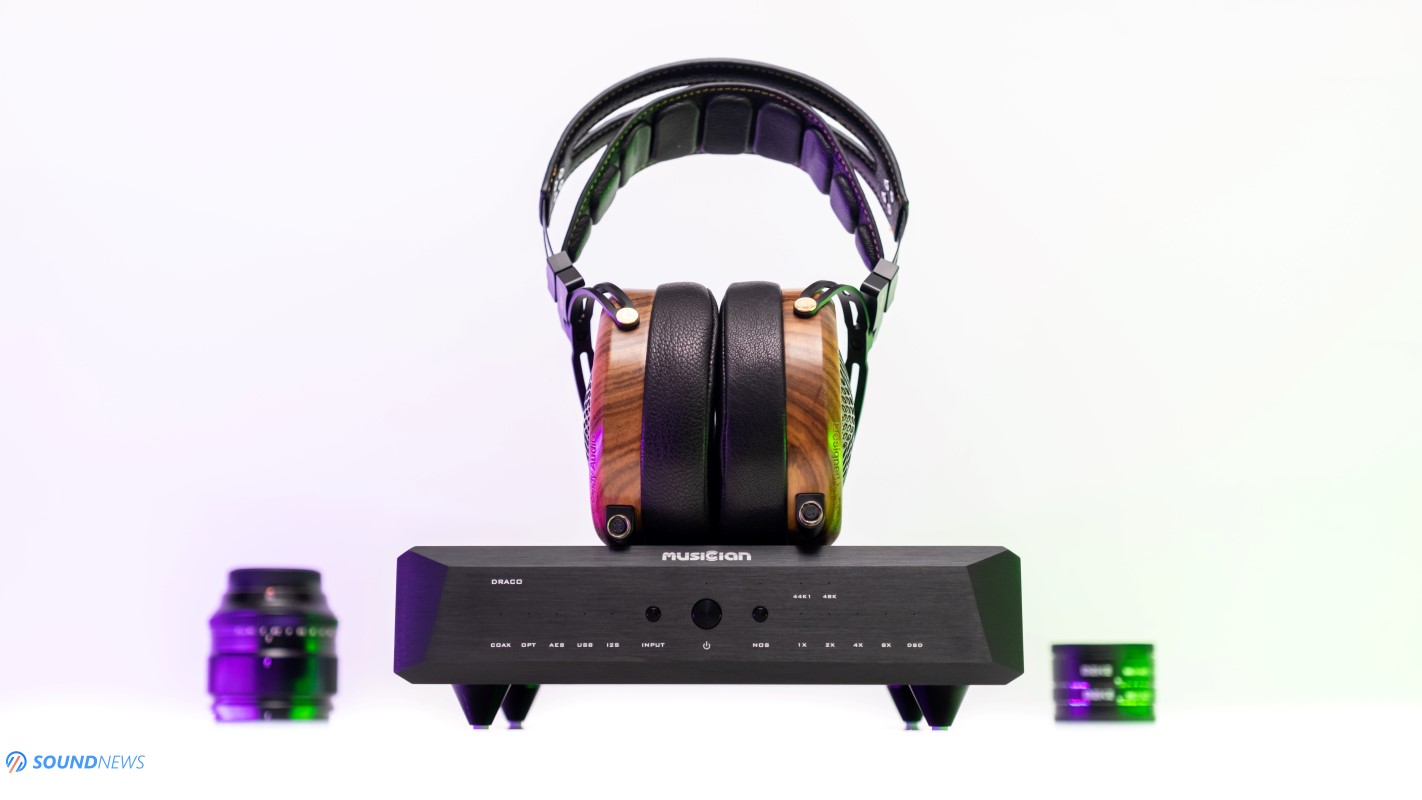
My Conclusion
Apart from a lower signal intensity, to a lower dynamic range and to a rounded frequency response compared to its bigger siblings, this is still a Musician Audio DAC in flesh and bones, playing music like its last song. Every. Single. Time. It has plenty of technicalities, but it’s not something that defines it. I’m looking at it like I’m looking at my kid, I see the potential, it isn’t that powerful or precise, it’s a little rough around the edges, but oh boy, it’s so energetic, fun and engaging sounding. This is the opposite of linearity and being straight as a line, this thing doesn’t abide by the rules, this is a blood-boiling rebel and maybe it’s better remaining this way. It would be a very sad world if all digital to analog converters would sound the same. Don’t you think?
Draco is only a DAC and nothing more, that is his most powerful skill, but also its weakest link. As a DAC it would perform better to the usual entry to mid-level chip-based converters, but you should prepare a budget for a preamplifier in case you’re driving your speakers with power amps as I’m doing. There is some bad attitude in this one mixed with fire and passion and it really carries a family resemblance. While it’s not the most technical, fast of impactful sounding unit, it made my music right, natural and smooth and for these reasons alone I’m going to award it with a Silver Award. Its price was fully justified and as of right now it doesn’t have a lot of competition.

You can get it only from their sole world-wide distributor Aoshida-Audio right here, it will cost you $750 and that includes free world-wide shipping to your front door, which makes it a much sweeter deal. In case you are getting one for your stereo or headphone setup, please come back, leave a comment below and let me know how it sounds. Until next time folks!
PROS:
- Big and weighty, feels well-built
- Similarly sized to their Andromeda, could form a good-looking stack
- Good part selection, good capacitance and power filtering stages
- Fully discrete input to output and fully balanced
- Holographic and 3D sounding all the time, offers precise pin-point location of the notes
- Vast and expansive sounding, layered and decompressed
- Good transient response delivery, engaging and alive sounding for the most part
- Sweet and dense sounding in the midrange, puts a lot of meat on the bone
- Unoffensive treble delivery
- Weighty and full-bodied down-low
- An above decent resolution and transparency
- Noiseless via XLR
- Wide selection of digital inputs
- The most affordable balanced R-2R ladder DAC of the moment
CONS:
- Lacks additional features
- Performs the best only via XLR
- Offers a lower signal intensity to its bigger brothers
ASSOCIATED EQUIPMENT:
- DACs: Musician Draco, Pegasus, Aquarius, Audiobyte HydraVox & HydraZap, Gold Note DS-10 Plus & PSU-10 EVO, SMSL VMV D2, Singxer SDA-6 Advanced, Matrix Audio Element X
- DAPs: FiiO M11 Plus LTD, Shanling M6 V.21
- Headphone Amps: Flux Lab Acoustics Volot, Benchmark HPA4, Ferrum OOR + Hypsos, Burson Soloist 3X, Musician Andromeda, Gustard H16
- Preamps: Musician Monoceros, Benchmark HPA4, Topping PRE90
- Power Amplifiers: Benchmark AHB2 (x2), KECES S300, SMSL SA400, Burson Timekeeper 3i
- Integrated Amplifiers: KECES E40, Burson Timekeeper 3i
- Loudspeakers: KEF Reference 3, Sound of Eden Crescendo UNO, Natural Sound NS17
- IEMs: FiiO FA9, FH7, FH5S, FD7, Meze Rai Penta, Rai Solo, LittleDot Cu KIS, Hiby Crystal 6, IKKO OH10, Moondrop KATO, 7Hz Timeless & others
- Portable headphones: Sennheiser Momentum 2, Meze 99 Classics, Sony WH1000-XM4
- Full-sized headphones: Hifiman Susvara, HE1000SE, Arya Stealth, HE400SE, Audeze LCD-4, Erzetich Phobos 2021, Phobos V2018, Mania, Kennerton Wodan, Magni, Gjallarhorn, Vali, M12S, Ollo S4X Reference, Apos Caspian, Sendy Peacock & Aiva
- Interconnects: QED Reference (x2), Topping TCX1 (x2)
- Speaker cables: Kimber PR8, Audioquest Type4
- Power Cables: Isotek EVO3 Premier (x3)
- Balanced Isolation Power Conditioners: PLiXiR Elite BAC1500 (stereo setup), Elite BAC400 (headphone setup)
